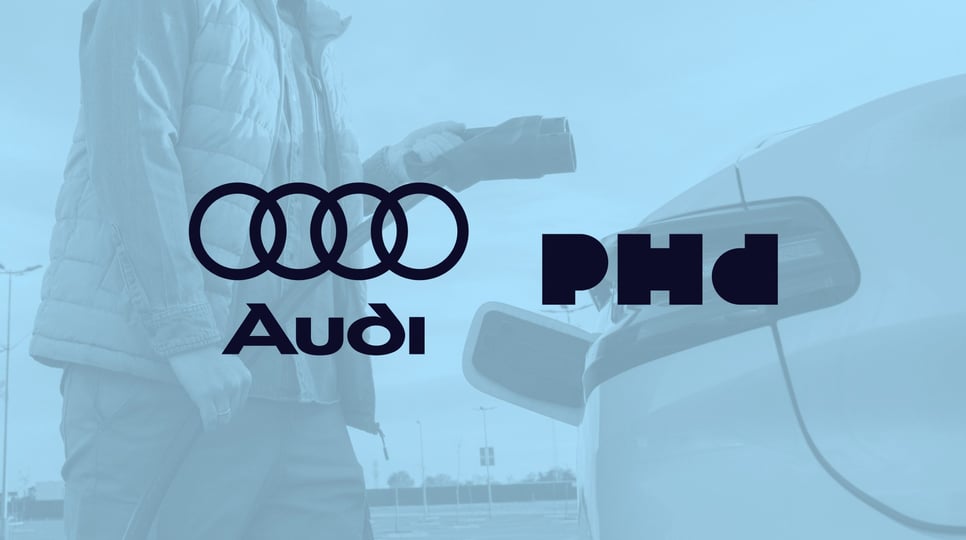Case Studies Data and measurement
FreshDirect delivers 388% increase in conversions with programmatic advertising

Select your country or region to see content tailored to your country.
Recruiting fraud is a growing issue for many companies.
The Trade Desk takes this issue seriously and is taking steps to address it.
Data and measurement


One of the world’s largest technology companies, Samsung wanted to become the top smartphone brand in a fiercely competitive market. Driving brand love and conversions across New Zealand, the brand upgraded its strategy with a data-driven multichannel targeting solution on The Trade Desk – unpacking greater brand consideration by 10.9%, while reducing conversion time by 71%. Find out more in the case study here.
“By combining data-driven precision with innovative strategies, we’ve reshaped our brand perception and taken campaign performance to remarkable levels. The Trade Desk not only helped us increase our brand resonance, but also set a new benchmark for effective marketing”
Nikola McCarthy
Head of Digital, Samsung New Zealand
THE CHALLENGE
Since its beginnings as a manufacturer of affordable electronic appliances, Samsung has grown into one of the world’s largest and most valued technology companies.
Its rise to the top reflects the company’s culture of innovation, backed by effective marketing strategies. This holds true in New Zealand, where Samsung commands an impressive share, accounting for almost a third of the smartphone market.
But New Zealand is also fiercely competitive. Most residents already own smartphones, and there are plenty of options to choose from. Samsung needed to not only capture consumer attention, but also cut through the noise. Driven by its ambition to become New Zealand’s top smartphone brand, Samsung decided to run a campaign to launch its Galaxy S23 and S23+ smartphones and also reshape brand perception to be seen as the best smartphone in the market.
The company worked with its agency, Starcom, to explore new ways to reach its target audience and drive sales for the new Galaxy phones. Samsung’s openness to experimenting with new formats, channels, and collaborators led them to our demand-side platform.
Our extensive suite of measurement tools – and the insights these could provide – clinched the deal.
THE SOLUTION
Samsung wanted to understand the ideal ad combination and exposure frequency to precipitate a purchase decision.
To drive awareness and conversions as well as engage audiences with a seamless cross-channel experience, Starcom employed a multifaceted strategy using advanced targeting on our platform. By deploying our universal pixel on Samsung’s website, the campaign team could track and optimize sales in real time.
Starcom built a data-driven strategy by categorising users into cold, warm, and hot segments based on the likelihood of converting them, employing custom segments from data partners such as Oracle. This segmentation enabled Samsung to create tailored ads that amplified engagement and conversions.
In addition, Samsung used our platform’s AI tool, Koa™, which helped to optimize reach and minimize ad waste by analyzing the campaign performance in real time and provide recommendations in refining ad placement and budget allocation.
Crucially, our cross-device targeting allowed Samsung to maintain a consistent user experience across channels and devices. It provided uniform messaging to each user across mobile phones, tablets, and desktops, elevating ad recall and conversion rates.
To measure Samsung’s campaign impact and its brand perception, the campaign team ran a brand lift study using a panel-based measurement solution from our partner Lucid (a Cint Group Company).
The study aimed to evaluate the impact of ad view frequency on brand awareness, taking into account specific benchmarks for New Zealand. It identified the most effective frequency and types of ads to enhance brand uplift. In turn, this led to the creation of precise frequency goals and limits across multiple channels.
This approach increased brand awareness while minimizing ad wastage and avoiding excessive audience exposure.
By strategically combining insights from display and video, the study not only amplified immediate campaign outcomes, but also laid the groundwork for future marketing strategies – tailored to New Zealand’s distinct market dynamics.
THE RESULTS
The numbers say it all: Lucid’s brand lift study showed that ad recall increased impressively by 9.1%. That was accompanied by a notable 10.9% lift in consideration, far exceeding Lucid’s New Zealand benchmark of 2.98%. Consideration was particularly high among 18- to 34-year-olds.
The study showed that users exposed to between four and nine ads yielded a significant 14.5% lift in consideration across display ads, highlighting the effectiveness of focused exposure. The campaign’s standout achievement was that 78% of conversions originated from users exposed to both display and video campaigns.
The impact of programmatic campaign’s display and video ads on other search and social advertising was unmistakable. Users exposed to both programmatic ads ran through our platform and social campaigns showed 1.5 times higher conversion likelihood than those solely exposed to social.
The multichannel approach accelerated conversion with extra channels, which was crucial within the tight campaign timeline. Likewise, integrating additional devices and channels reduced average conversion time from 14 to 4 days for users exposed to multiple devices and channels.
As the campaign wrapped up, it marked a new period of informed and intelligent marketing for Samsung in New Zealand. The campaign insights and brand lift survey have built a strong foundation for upcoming initiatives, enhancing the company’s marketing effectiveness across multiple channels.
Interested in learning how to activate a multichannel approach to help drive consideration and conversions? Fill out this form to learn more.
Case Studies Data and measurement

Case Studies Data and measurement

Case Studies Data and measurement
